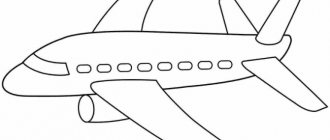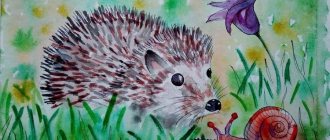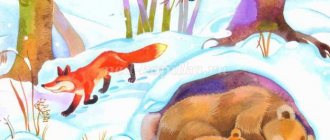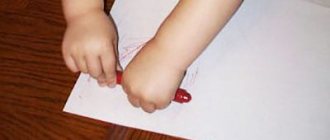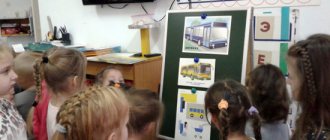Exciting activities for children aged 3 to 4 years in drawing with colored pencils, gouache and watercolors in traditional and non-traditional ways develop aesthetic perception. Kindergarten is the best place for developing emotional responsiveness, cultivating a sense of beauty, developing imagination, independence, perseverance, accuracy, hard work, and developing visual skills.
Fine arts lesson on the topic “Planes are flying” in junior kindergarten groups
Before preparing a lesson for children in the younger groups of kindergarten, you need to choose an interesting topic. In the process of visual activity, children must reflect life impressions. Drawing in the second junior group “Planes are flying” teaches you to depict objects and phenomena that form clear ideas about the environment.
Fine art lesson on the topic “Planes are flying” for younger groups
Example of drawing lesson notes
The program content should contain children's material, which must be conveyed in a drawing, reflecting the phenomena of modern life. Kids can draw airplanes flying in the sky. In addition, children should learn to draw straight lines in different directions when drawing objects related to flight. This technique contributes to the development of aesthetic perception.
Preview:
Summary of drawing lessons for young children
"Road for Cars"
1. Exercise children in the ability to draw a straight line without lifting the brush from the sheet.
2. Develop fine motor skills of the hands.
3. Cultivate accuracy when working with gouache.
Materials: brushes, jars of paint, jars of water, napkins for each child; three toy cars, a finished sample drawn; pattern with one stripe, pattern with two stripes.
Educator: Guys, cars came to visit us today, they are magical and came to us from a magical land. (shows three small cars).
Guys, look at the cars and tell me what kind of cars they are? (cars) and this? (freight)
-What color are they?
- What does the car have? (wheels, body, headlights, doors, windows, steering wheel, windshield, mirrors)
Let's show our cars how we can do (physical education minute):
To drive a car, we need to pump up the tires (simulation of movement with the sound shhhhh)
Pour gasoline into the gas tank (simulation of movement)
And let's go to the store (“travel” around the room)
Educator: Guys, do you know that our cars are very sad and upset! Do you know why? Yes, because they were driving towards us along a bad road. The road was full of holes, ditches and mounds! They almost broke down, and they still had to return home, so they were sad. Let us draw the cars a new smooth, smooth and colorful road.
Educator: Now, we sit down at our tables, but no one takes anything, you need to listen carefully to how we are going to draw so that it turns out correctly and only after I say loudly: DRAW, you will start drawing. Agreed?
— You have brushes, paints, jars of water and napkins on your tables. Now each of you will draw a part of the road, evenly and neatly, then we will let the drawing dry and collect our drawings into one long and beautiful road and show it to the cars, imagine how happy they will be. Look how I drew my path. To draw yours, you need to draw one line from top to bottom, then a second one and paint over the middle.
- Now, let’s pick up the brushes correctly (the teacher shows how to do it and looks at how the children are holding it; if it’s wrong, he corrects it). DRAW (speaks loudly) The children begin to draw, and the teacher draws with them again from the very beginning and says: first, from top to bottom, one line (sees how the children do it, then not far away the second line (looks at the children) and paint over (the teacher goes in rows to control the children's process, directing or correcting, or praising the children who are correct).
As the drawings are completed, the teacher takes the children's work to dry, praises each child and thanks them for their help on behalf of the machines.
- Well done guys, you tried very hard, the cars are happy and happy.
Source of the article: https://nsportal.ru/detskiy-sad/risovanie/2020/09/22/konspekt-zanyatiya-po-risovaniyu-s-detmi-rannego-vozrasta-doroga
Lesson Objectives
The main task is to form a self-sufficient, multifaceted, creative personality. Drawing for the 2nd junior group “Planes are flying” promotes the development of creative and cognitive activity and the enrichment of new knowledge. The child begins to get acquainted with the world around him.
Important! If you use non-standard materials and techniques, then you can easily interest children in visual arts. This method turns the process into an interesting hobby.
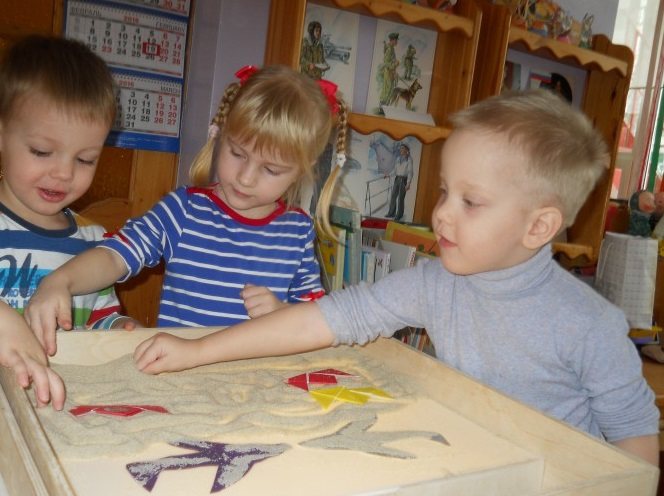
Airplane drawing problems
Educational tasks:
- develop the ability to listen carefully to the teacher’s explanation;
- cultivate positive emotions from classes and free motor activity;
- develop the ability to interact and establish contacts with adults and each other through speech;
- cultivate interest in drawing and evoke an emotional response.
Developmental tasks:
- develop the ability to independently and at the request of an adult take part in conversations;
- increase curiosity and cognitive interest in transport objects;
- develop fine motor skills, auditory perception, clarify and consolidate the articulation of the sound “u”;
- promote the development of skills in expressive and emotional transmission of game images.
On the topic: methodological developments, presentations and notes
Goal: to develop in children a sense of caring, responsible attitude towards nature. Tasks: v teach children to filter water; v teach children to plant seeds in beans; v reinforce the rules of behavior in.
Goal: consolidation and expansion of ideas about the vowel sounds “A”, “O”, “U”, “I”, “E”. Tasks:v consolidate the ability to determine position.
Summary of organized educational activities in the educational field “Artistic and aesthetic development” “Drawing” for younger children.
Children gain knowledge, skills, and abilities through gaming activities.
In direct educational activities, children acquire practical knowledge and skills in making birdhouses.
Summary of direct educational activities on artistic and aesthetic development (design) for children of senior preschool age Topic: “Bow for Cinderella.”
Summary of direct educational activities on artistic and aesthetic development (drawing) for children of senior preschool age Topic: “Maple leaves.”
Source of the article: https://nsportal.ru/detskiy-sad/risovanie/2018/01/21/narisuem-dorogu-dlya-mashiny-konspekt-obrazovatelnoy-deyatelnosti
Materials and equipment needed for the lesson

Materials and equipment to perform the work
For the lesson to go perfectly, you need to select a sheet of light blue paper, light gray gouache paints, brushes, jars of water, paper and cloth napkins, an easel, a toy aircraft, pictures of an airliner, a poster with flying planes.
Two toy airplanes are suitable as demonstration material.
For your information! From the handouts, it is recommended to prepare a large sheet of paper on which the flight of an airliner is depicted.
Progress of the lesson:
Greeting "Hello"
Hello palms - clap, clap, clap Hello legs - stomp, stomp, stomp. Hello cheeks - splash, splash, splash Hello lips - smack, smack, smack Hello teeth - am, am, am. Hello spout - beep, beep, beep. Hello guys - hello!
Didactic exercise “Whose sound?”
Listen carefully, whose sound is this? (A recording of the noise of moving vehicles is played.) Whose voice is this? This is a car!
Staging of a poem by A. Barto
Listen to a poem about how a cat decided to go for a ride in a car.
No, it was in vain that we decided to take the cat for a ride in the car: the cat was not used to riding - he overturned the truck. Didactic game “Matryoshkas are riding in a car” Look, these are nesting dolls. Matryoshka traveler dolls. They want to take a ride in the car. Here we have two cars. Big car and small car. How many nesting dolls can fit in a small car? Few. But how many nesting dolls can fit in a large car? Lots of nesting dolls.
Exercise for the development of the vestibular apparatus “We went for nuts”
We were driving into the forest to pick nuts. (The child sits on his mother’s lap)
On a flat path. Over the bumps, over the bumps, at a trot. (Mom’s knees rise rhythmically at an increasing pace)
Step by step. The pace slows down. Into the hole - bang. Ten flies were crushed. (Knees spread to the sides, hands hold the child)
Game "Collect nuts"
Look, look how many nuts fell from the tree onto the road. Let's collect them and put them in a hollow, let the squirrel rejoice. (Children collect nuts and put them in a plastic bottle with a side hole simulating a hollow).
Didactic game “Where is the car hidden?”
A matryoshka doll, a cube and a car are placed in front of the child, which are then covered with handkerchiefs.
Find where the car is hidden? Pick up your handkerchief and find the typewriter.
Didactic exercise “Find the car in the picture”
That's how many different pictures there are. Take and show a picture of a car. Where is the machine?
Drawing “Roads for cars”
Take a pencil in your hand and draw a path for your car.
Musical and rhythmic exercise “We are going, going, going”
Children listen to music and beat out the rhythm with rattles. - Make some noise at the top. Tap the rattles on the floor. Tap the rattles on your knees. Hands with rattles to the sides. Hide the rattles behind the back.
Construction game “Car Garage”
When night comes, you and I go to bed in our beds at home. And real cars go to sleep in a special house for cars, called a “garage”. Now you and I will build a garage for our car. Take the cubes. Place them like this. And be sure to cover the top with a roof. Now our cars have their own garages.
Massage “These are the wheels”
For a car to move, it needs wheels. Look where the wheels are on your car? Spin the wheels by hand. Now let the car ride on your palm. Like this. I went along the handle, I went along the leg.
The wheels of the car are spinning and spinning, Spinning and spinning, we drove through the whole city.
Application "Wheels"
Look at the picture. Our truck is completely broken down, it can’t even move. What doesn't the truck have? Wheels!
Let's fix our car - give it real wheels. The wheels of the car are round. Look, children, this is a circle. (Show). Place these circles at the very bottom of the car. These are the wheels the car has! Now our truck will be able to drive and transport different loads.
Balance exercise “Cars driving on a bridge”
And now we ourselves will drive like cars. Get up, we're heading out. First you need to drive along the road (between two cords), and then along the bridge (along the bench).
Modeling “Truck carrying apples”
Take a plasticine ball and attach it to the body of the car. Press down the plasticine on top with your palm. Load more apples into the machine. What color apples is the car carrying? Red and yellow.
Preliminary work with children, discussion of the topic
At the first stage, the image of the aircraft is examined, the idea of the features of the appearance of the airliner (flying in the sky, through the air) is clarified. In addition, it is possible to sculpt an airplane and read a fairy tale.
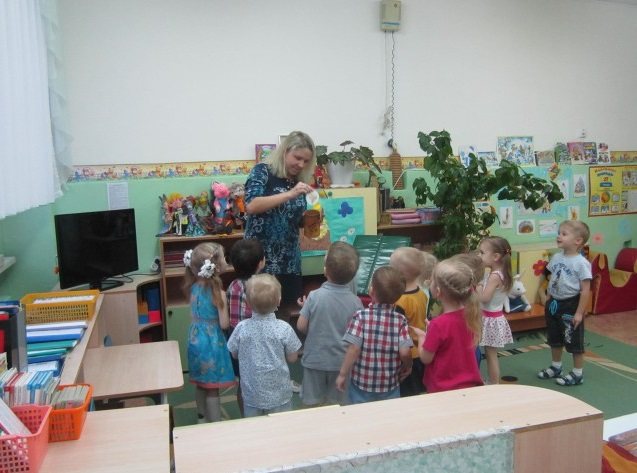
Demonstration of materials
Which image to choose for printing on paper
Before choosing a sample to put on paper, the teacher introduces the children to the world of art. This method serves to develop a basic understanding of works of decorative and applied art and architecture. The teacher invites the kids to look at the template - an airplane.
The theme of the week is “Book Week” in the senior and preparatory groups
Questions for children based on their drawings
At the end of the lesson, the teacher can ask the children questions to reinforce the material:
- Children, what did you draw?
- How did you draw airplanes?
- Did you like drawing the plane?

The teacher asks questions to the children based on their drawings
When creating a drawing, kids should imagine the surrounding objective world. And thematic lessons play an important role in this. Drawing on the theme “Planes are flying” is an excellent choice for developing imagination and increasing children’s interest. The main thing is to praise the young artists at the end of the lesson, even if they didn’t do everything right.
